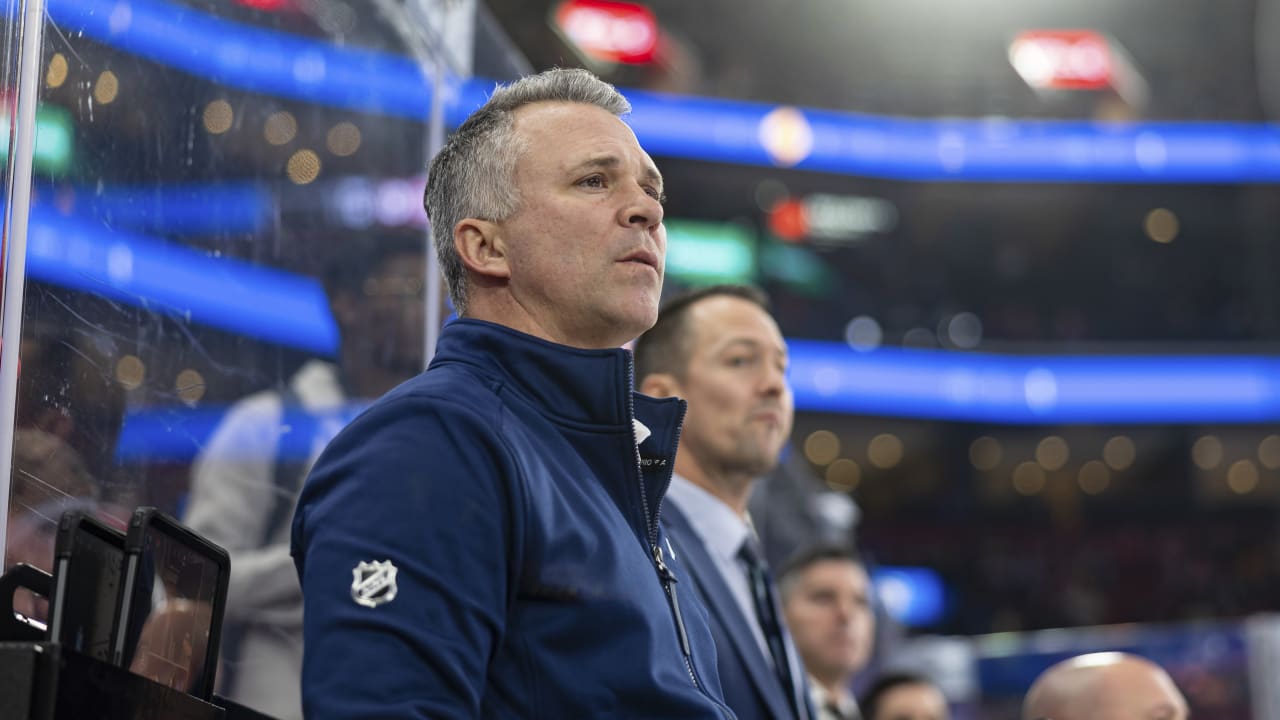
The departure of Martin St. Louis from the NHL team Tampa Bay Lightning in 2014 was a defining moment in his illustrious career and in the history of the franchise. Known for his skill, speed, and leadership qualities, St. Louis’ departure marked the end of an era for the Lightning. As a player who had been with the team for more than a decade, his exit reverberated not only through the Lightning organization but also across the hockey world. In this article, we will examine the circumstances surrounding his departure, the impact it had on both the Tampa Bay Lightning and the New York Rangers, and the legacy he left in the NHL.
Who is Martin St. Louis? A Brief Overview of His Career
Early Career Beginnings
Before becoming an NHL legend, Martin St. Louis faced numerous obstacles. Born on June 18, 1975, in Laval, Quebec, St. Louis was overlooked by many during his early years. Despite his obvious talent, he went undrafted by the NHL, a setback that would have discouraged many athletes. However, St. Louis’ determination and drive to prove himself fueled his journey. He played college hockey at the University of Vermont, where his performance caught the attention of the Calgary Flames, who signed him as a free agent in 1998.
Despite being an undersized player (5’8″ and 180 pounds), St. Louis quickly proved that his size would not limit his game. His exceptional skating ability, work ethic, and hockey IQ helped him overcome his physical limitations.
Rise to Stardom with Tampa Bay Lightning
St. Louis’ breakthrough came with the Tampa Bay Lightning, where he made a name for himself as one of the most dynamic and productive forwards in the league. In the 2003-2004 season, St. Louis led the league in points, winning the Art Ross Trophy as the NHL’s top scorer. His incredible season was capped by him winning the Hart Trophy as the league’s Most Valuable Player. During this time, he helped lead the Lightning to their first-ever Stanley Cup victory in 2004, solidifying his status as one of the best players in the league.
Over the years, St. Louis continued to be a top performer for the Lightning, earning numerous accolades, including multiple All-Star appearances and All-NHL selections. His combination of speed, vision, and scoring ability made him a constant threat on the ice. His leadership qualities were just as evident off the ice, where he became one of the most respected players in the locker room.
The Moment of Departure: Why Did Martin St. Louis Leave?
The Trade to the New York Rangers
In 2014, Martin St. Louis departed from Tampa Bay after a surprising trade to the New York Rangers. The trade, which sent St. Louis to the Rangers in exchange for forward Ryan Callahan, was one of the most talked-about deals in recent NHL history. The move shocked many fans, as St. Louis had been a cornerstone of the Lightning for over a decade, and his loyalty to the franchise had seemed unwavering.
The trade was partly driven by the Lightning’s salary cap situation, which required them to make difficult roster decisions. However, the decision also stemmed from St. Louis’ apparent unhappiness with his situation in Tampa Bay. There were reports that St. Louis had requested a trade due to personal reasons, including the recent death of his mother. It was clear that St. Louis was seeking a change, and the Rangers, who were in the midst of a playoff push, acquired him to bolster their lineup with his skill and leadership.
Personal Reasons Behind the Departure
While the trade was primarily seen as a strategic move for both teams, there were also personal factors that influenced St. Louis’ decision to leave. At the time, St. Louis was grieving the loss of his mother, and it was reported that he wanted to be closer to his family. The timing of the trade coincided with this personal hardship, and many believed that St. Louis was seeking a fresh start, both professionally and personally.
In interviews following the trade, St. Louis was candid about the emotional toll that losing his mother had taken on him. He also explained that his relationship with the Lightning organization had become strained, making the decision to move on more difficult but necessary.
The Impact of Martin St. Louis’ Departure on the Tampa Bay Lightning
Team Dynamics Post-Departure
The immediate aftermath of Martin St. Louis’ departure was challenging for the Tampa Bay Lightning. While the team received Ryan Callahan in return, the loss of a player like St. Louis, who had been central to the team’s offense for years, left a significant void. St. Louis had been a leader in the locker room and a player who consistently delivered in clutch moments. Replacing a player of his caliber would not be easy.
However, the trade also allowed the Lightning to make room for younger talent, and the team soon began to develop into one of the NHL’s premier franchises. With players like Steven Stamkos and Victor Hedman continuing to evolve, the Lightning quickly bounced back, with the team reaching the Eastern Conference Finals in 2015 and eventually winning the Stanley Cup in 2020.
Although St. Louis’ departure marked a painful chapter in the Lightning’s history, it also accelerated the team’s growth and led to the eventual rise of a championship-caliber roster.
Long-Term Effects on the Lightning’s Success
While St. Louis was no longer with the Lightning when they won the 2020 Stanley Cup, his influence on the franchise remained evident. St. Louis helped establish a winning culture in Tampa Bay, and his leadership left a lasting impact on the players who followed him. The Lightning’s eventual success, including their back-to-back Stanley Cup victories in 2020 and 2021, can be traced back to the lessons learned during St. Louis’ time in Tampa Bay.
The Lightning had also developed a deep respect for St. Louis’ work ethic and competitive spirit. These traits were ingrained in the team’s culture and continued to drive their pursuit of excellence.
Martin St. Louis’ Legacy and Contribution to the New York Rangers

A New Challenge with the Rangers
After the trade, St. Louis embraced a new challenge with the New York Rangers. Though he was nearing the end of his career, he was still capable of making significant contributions to the Rangers. In his first season with the team, he helped lead the Rangers to the Stanley Cup Final, although they ultimately lost in five games to the Los Angeles Kings.
St. Louis’ experience and leadership were invaluable to the Rangers during their playoff run. His presence in the locker room, along with his high hockey IQ and exceptional passing ability, proved to be exactly what the team needed to make a deep postseason push. Although St. Louis was no longer the same player he had been in his prime, he still had the ability to impact the game in a meaningful way.
Mentorship of Younger Players
One of St. Louis’ most important contributions during his time with the Rangers was his mentorship of younger players. As a veteran, he took it upon himself to guide the younger members of the team, offering advice and helping them develop their games. Players like Derek Stepan, Mats Zuccarello, and Chris Kreider benefited from St. Louis’ wealth of experience and leadership.
St. Louis set a high standard for work ethic and professionalism, and his ability to continue contributing at a high level, despite his age, became an example for the younger players on the Rangers to follow.
The Influence of Martin St. Louis on the NHL and Beyond
Changing the Game: St. Louis’ Role in the Evolution of the NHL
St. Louis played a crucial role in the transformation of the NHL into a faster, more skill-based league. At a time when the NHL was dominated by larger, more physical players, St. Louis’ speed, agility, and creativity were revolutionary. His style of play showed that a player’s skill and intelligence could be just as effective—if not more so—than physicality in today’s game.
His contributions went beyond just his playing style. St. Louis was a trailblazer for smaller players in the league, proving that size should not be a limiting factor in achieving success. His achievements inspired other undersized players to pursue their dreams and showed the hockey world that determination and skill could overcome physical limitations.
Off the Ice: St. Louis’ Philanthropy and Community Engagement
St. Louis’ impact wasn’t limited to the ice. Off the ice, he was a philanthropist who gave back to the community. He was involved in several charitable initiatives, including youth hockey programs and community outreach efforts. His dedication to giving back to the game and helping those less fortunate highlighted his character beyond just being a hockey player.
Conclusion: The End of a Chapter, But Not the Legacy
The departure of Martin St. Louis from the Tampa Bay Lightning marked the end of an era for the franchise, but it also began a new chapter in his career with the New York Rangers. Throughout his journey, St. Louis demonstrated the power of perseverance, work ethic, and humility. His legacy, both in Tampa Bay and New York, will be remembered for years to come. Whether through his incredible achievements on the ice, his leadership qualities, or his mentorship of younger players, St. Louis made an indelible mark on the NHL. His impact, both as a player and as a person, will continue to resonate for generations to come.
